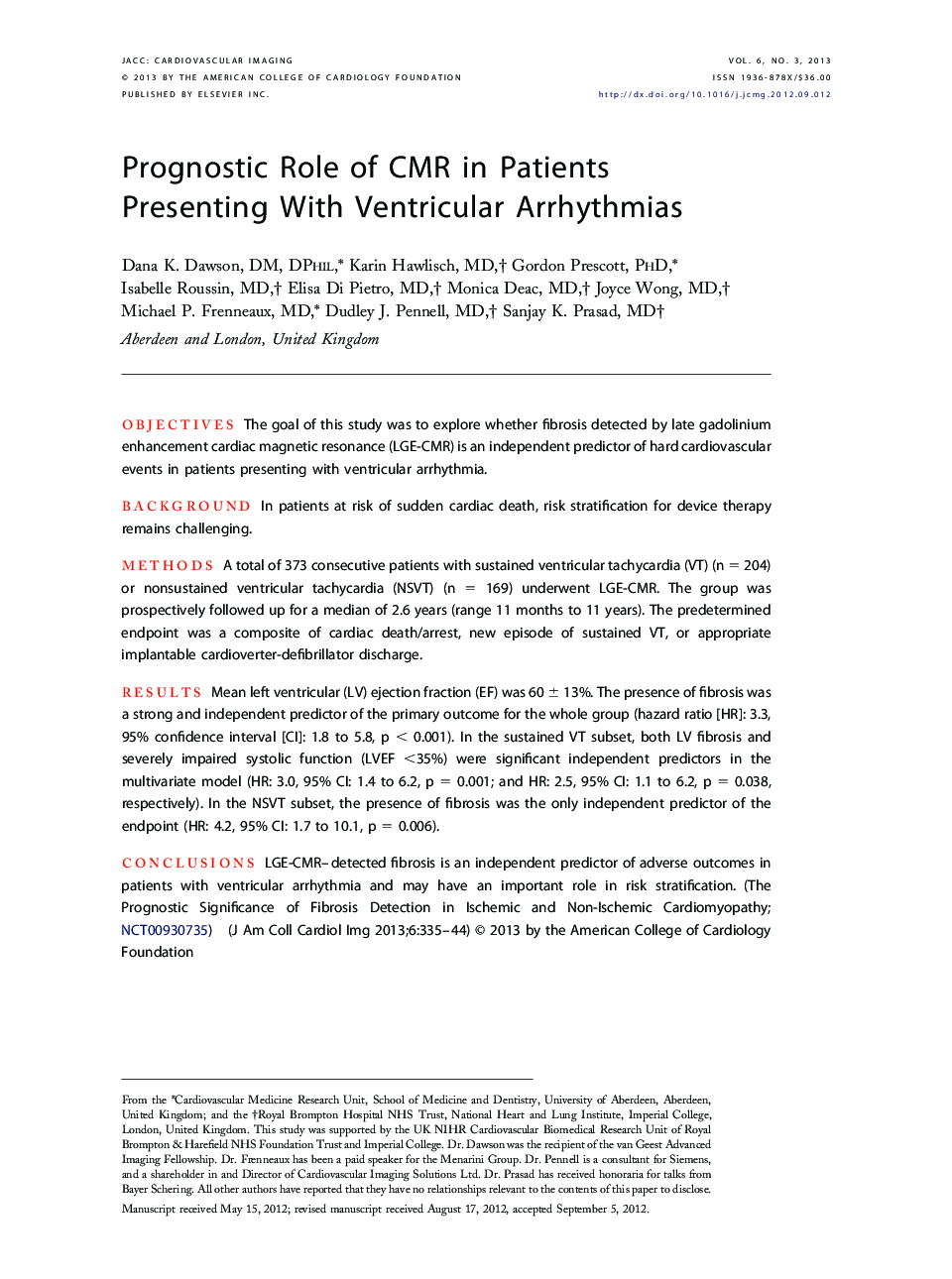| Article ID | Journal | Published Year | Pages | File Type |
|---|---|---|---|---|
| 2938196 | JACC: Cardiovascular Imaging | 2013 | 10 Pages |
ObjectivesThe goal of this study was to explore whether fibrosis detected by late gadolinium enhancement cardiac magnetic resonance (LGE-CMR) is an independent predictor of hard cardiovascular events in patients presenting with ventricular arrhythmia.BackgroundIn patients at risk of sudden cardiac death, risk stratification for device therapy remains challenging.MethodsA total of 373 consecutive patients with sustained ventricular tachycardia (VT) (n = 204) or nonsustained ventricular tachycardia (NSVT) (n = 169) underwent LGE-CMR. The group was prospectively followed up for a median of 2.6 years (range 11 months to 11 years). The predetermined endpoint was a composite of cardiac death/arrest, new episode of sustained VT, or appropriate implantable cardioverter-defibrillator discharge.ResultsMean left ventricular (LV) ejection fraction (EF) was 60 ± 13%. The presence of fibrosis was a strong and independent predictor of the primary outcome for the whole group (hazard ratio [HR]: 3.3, 95% confidence interval [CI]: 1.8 to 5.8, p < 0.001). In the sustained VT subset, both LV fibrosis and severely impaired systolic function (LVEF <35%) were significant independent predictors in the multivariate model (HR: 3.0, 95% CI: 1.4 to 6.2, p = 0.001; and HR: 2.5, 95% CI: 1.1 to 6.2, p = 0.038, respectively). In the NSVT subset, the presence of fibrosis was the only independent predictor of the endpoint (HR: 4.2, 95% CI: 1.7 to 10.1, p = 0.006).ConclusionsLGE-CMR–detected fibrosis is an independent predictor of adverse outcomes in patients with ventricular arrhythmia and may have an important role in risk stratification.(The Prognostic Significance of Fibrosis Detection in Ischemic and Non-Ischemic Cardiomyopathy; NCT00930735)
